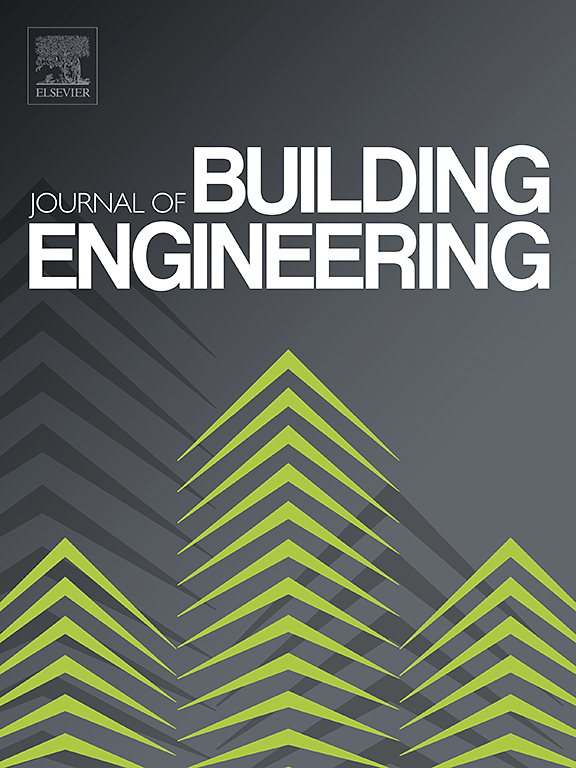Study on the structural behavior and reinforcement design of openings in subway station floor slabs
IF 6.7
2区 工程技术
Q1 CONSTRUCTION & BUILDING TECHNOLOGY
引用次数: 0
Abstract
This paper investigates the structural behavior of openings in subway station floor slabs through model experiments and finite element simulation. The study analyzes the effects of the opening's aspect ratio, dimensions, and position on the stress characteristics of various structural components. Based on the stress levels and failure characteristics at different locations in the station structure, three reinforcement schemes are proposed: adding corner fillets, installing buttress columns, and adding ring beams. Comparative analysis with the original structure's internal forces and displacement patterns reveals the effectiveness of each reinforcement scheme. The results show that openings reduce the moment of inertia of the floor slab cross-section, weakening the slab's stiffness and making the area around the openings and slab-column joints prone to local damage. Increasing the aspect ratio of the opening, enlarging its dimensions, or closely arranging multiple openings diagonally reduces the local load-bearing capacity of the structure. Adding corner fillets can reduce the maximum equivalent stress in the slab by more than 15 %, alleviating stress concentration caused by the openings. Buttress columns and ring beams increase the stiffness of the side walls, distribute the lateral forces causing wall bending moments, and enhance the structure's resistance to lateral displacement.
地铁站楼板开口的结构行为和加固设计研究
本文通过模型试验和有限元模拟研究了地铁站楼板开口的结构行为。研究分析了开口的长宽比、尺寸和位置对各结构部件应力特性的影响。根据车站结构不同位置的应力水平和破坏特征,提出了三种加固方案:增加角片、安装支撑柱和增加圈梁。通过与原结构内力和位移模式的对比分析,可以看出每种加固方案的有效性。结果表明,开口降低了楼板横截面的惯性矩,削弱了楼板的刚度,使开口周围区域和板柱连接处容易发生局部破坏。增大开口的长宽比、扩大开口尺寸或将多个开口对角紧密排列,都会降低结构的局部承载能力。增加角部圆角可将板中的最大等效应力降低 15%以上,从而减轻开口造成的应力集中。支撑柱和圈梁可增加侧墙的刚度,分散造成墙体弯矩的侧向力,并增强结构的抗侧向位移能力。
本文章由计算机程序翻译,如有差异,请以英文原文为准。
求助全文
约1分钟内获得全文
求助全文
来源期刊

Journal of building engineering
Engineering-Civil and Structural Engineering
CiteScore
10.00
自引率
12.50%
发文量
1901
审稿时长
35 days
期刊介绍:
The Journal of Building Engineering is an interdisciplinary journal that covers all aspects of science and technology concerned with the whole life cycle of the built environment; from the design phase through to construction, operation, performance, maintenance and its deterioration.
 求助内容:
求助内容: 应助结果提醒方式:
应助结果提醒方式:


